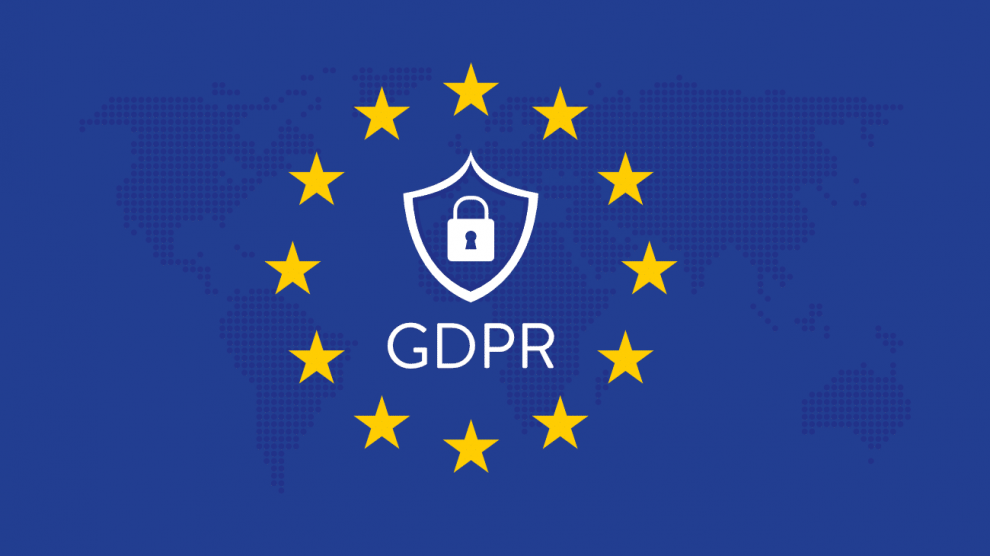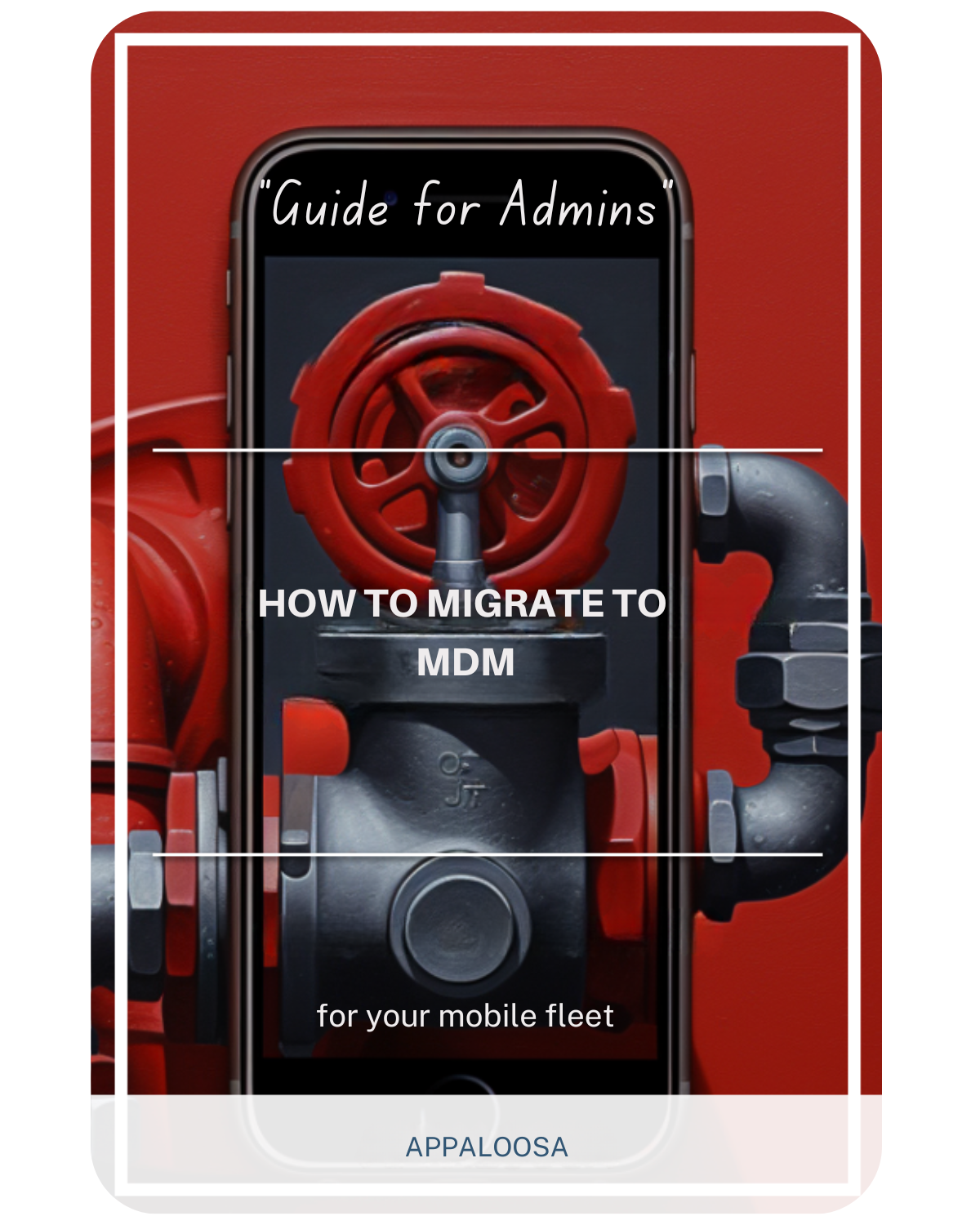Understanding GDPR Compliance in MDM

The General Data Protection Regulation (GDPR) is more than just a set of stringent data protection rules established by the European Union; it's a global standard that has significant implications for organizations worldwide. When it comes to Mobile Device Management (MDM), understanding and incorporating GDPR guidelines can be complicated yet crucial. This article delves into the interplay between GDPR and MDM, discussing why GDPR compliance is essential, what challenges arise in different MDM deployment models, and what practical steps MDM administrators can take to ensure compliance.
This article is part of our guide "Mastering Mobile Device Management Operations: A Guide for Admins".
GDPR and Its Core Principles
The General Data Protection Regulation (GDPR) is founded on seven core principles that serve as the backbone for data protection: lawfulness, fairness, and transparency; purpose limitation; data minimization; accuracy; storage limitation; integrity and confidentiality; and accountability. Within the complex ecosystem of Mobile Device Management (MDM), these principles evolve into a maze of obligations and responsibilities for administrators. Navigating this maze incorrectly can result in substantial repercussions.
For instance, failing to maintain data accuracy might lead to the incorrect application of security policies, causing significant operational disruptions. This mistake could be deemed a violation of GDPR's "accuracy" principle, carrying the risk of hefty fines up to €20 million or 4% of the company's annual global turnover, whichever is higher. Similarly, a lack of transparency about the data being collected can infringe on the "lawfulness, fairness, and transparency" principle, potentially resulting in lawsuits or reputational damage that could take years to repair.
Lapses in "integrity and confidentiality" by, say, not adequately encrypting sensitive data on mobile devices can result in unauthorized access or data breaches. Such breaches not only attract GDPR fines but also result in the loss of customer trust, thereby affecting future business. Moreover, not being able to demonstrate compliance or "accountability" may result in a company facing rigorous audits, damaging its credibility in the market.
Ignoring "storage limitation" by retaining personal data longer than necessary could also invite fines and place a burden on the organization to continually secure outdated or unnecessary data. Lastly, failing to clarify the purpose of data collection and its limitations can leave the organization vulnerable to legal actions, impacting its long-term viability.
So, within MDM, GDPR is not just a set of guidelines but a mandatory framework that requires meticulous attention to detail and ongoing diligence. The repercussions of failure are not just operational but legal and reputational, making it vital for administrators to understand and implement these core principles fully.
Lawfulness, Fairness, and Transparency in MDM
When the GDPR talks about lawfulness, fairness, and transparency, it essentially aims to ensure that personal data is processed in a way that the subject can understand and to which they can reasonably consent.
Informed Consent
For MDM administrators, this principle means that you must obtain explicit consent from device users for the type of data you collect and how you intend to use it. For example, if you're using geo-fencing features to locate devices for asset tracking, you can't just include this in fine print. You must be transparent and upfront about it, allowing users to opt-in or out clearly.
User Education and Engagement
Moreover, regular communication with device users about how their data is being used and protected fosters a culture of transparency and trust. Consider periodic audits and training programs to educate employees about the implications of GDPR in the context of MDM.
Purpose Limitation and Data Minimization
The principle of purpose limitation restricts the collection of data to specific, stated objectives. Similarly, data minimization insists that only the data absolutely necessary for the stated purpose should be collected.
Smart Policy Design
In MDM, this implies that administrators must carefully craft their policies to ensure they do not inadvertently capture more data than required. For instance, if you're monitoring for unauthorized apps, there's no need to keep logs of personal text messages or images.
Regular Audits
Regularly auditing the data collected against the purpose can help in maintaining a clean data stream. Overlooked logs or redundant data repositories should be flagged and addressed promptly to adhere to these principles.
Why GDPR Compliance is Crucial in MDM
GDPR compliance isn't just about avoiding hefty fines; it's a business-critical requirement. Negligence can lead to a range of outcomes that could severely impact your organization.
Legal Implications and Fines
Financial repercussions due to GDPR non-compliance are severe and should not be underestimated.
Understanding Penalties
The fines can reach up to €20 million or 4% of annual global revenue, whichever is higher. For instance, let's say your MDM system collects personal emails without user consent. In that case, you could face enormous penalties, severely affecting your organization's financial health.
Real-World Example
In fact, there have been instances where companies have been fined for similar data privacy infringements. Though these might not have been directly related to MDM, they serve as cautionary tales.
Importance of Reputation Management
Public perception is critical in today's hyper-connected world, where news spreads like wildfire.
The Domino Effect
A single incident of GDPR violation can trigger a cascade of negative publicity, affecting customer trust and share value. For organizations in data-sensitive sectors like healthcare or finance, this could mean a steep decline in customer trust and market value.
Long-Term Impact
It's also worth noting that the reputational damage could extend far beyond the immediate aftermath of the disclosure, affecting partnerships, stakeholder trust, and even employee morale.
GDPR Compliance Challenges in Various MDM Models
Different MDM deployment models introduce their own unique challenges when it comes to GDPR compliance.
BYOD (Bring Your Own Device)
The BYOD model poses distinct complexities because personal and professional data co-exist on a single device, making it a fertile ground for unintentional GDPR violations.
Segregating Data
Effective segregation of corporate and personal data is imperative. Often, MDM solutions offer containerization features that isolate enterprise data, but admins must be meticulous in ensuring that personal data remains untouched.
Consent Complexity
Additionally, the matter of consent becomes more intricate. Admins must explain in layman's terms how corporate and personal data will be treated differently to avoid legal complications.
COPE (Corporate Owned, Personally Enabled)
In COPE models, although the organization owns the device, personal usage is allowed.
Explicit Policies
Here, it's crucial to have explicit policies that clarify the boundaries of data collection. Failing to do so could lead to inadvertent data collection, which might contradict GDPR's principles.
Periodic Reviews
Regular policy reviews should be conducted to ensure they align with the ever-evolving landscape of GDPR compliance, considering that personal apps could potentially access corporate data and vice versa.
Fully Fledged MDM
In fully managed MDM solutions, the organization has complete control over the device, making compliance somewhat easier but still demanding.
Clear-Cut Policies
Here, policies must be transparent and unequivocal. Users should know, for example, that their device's microphone or camera could be disabled for security reasons and not for invading their privacy.
Consent Forms
Even in a fully managed scenario, consent forms are necessary to explain any tracking or data collection activities clearly. In this model, the balance tips more towards the organization, but GDPR compliance still mandates that the user's rights and privacy are not violated.
Consent and Transparency: The Cornerstones
Clear and explicit consent forms are paramount in achieving GDPR compliance. These forms should be designed to be as understandable as possible.
Importance of Consent Forms
Consent forms should not just be legal disclaimers filled with jargon. They should be easy to understand and allow the user to make an informed choice about the kind of data they are willing to share.
Layered Approach
A layered approach to consent can be beneficial, where the most critical information is highlighted, and additional information can be accessed through links or pop-ups.
Transparency in Data Policies
Transparency is not just about open communication but also about ensuring that data policies are accessible and understandable.
Ease of Access
Data policies should be easily accessible, hosted on intranet pages, or distributed via emails to all employees. Any changes to these policies should be communicated through multiple channels to ensure they reach all affected parties.
User Education
Moreover, clarity should be maintained in how the data collection serves the organization's security objectives, making sure that this does not clash with individual privacy rights.
Practical Steps for MDM Admins
Compliance with GDPR is not a one-time activity but an ongoing process. MDM admins should take proactive steps to ensure they remain on the right side of the law.
Conducting Data Protection Impact Assessments (DPIAs)
A DPIA is not just a regulatory requirement but a smart business move.
Identifying Risks
It helps identify potential data protection risks that may not be immediately apparent. For example, you might discover that your MDM's Wi-Fi tracking feature could be considered invasive under GDPR rules, thereby enabling you to disable it before any complaints arise.
DPIA as a Regular Exercise
Make DPIA a regular exercise, aligning it with major policy changes or feature updates to your MDM solution. By doing so, you make compliance an integral part of your MDM administration routine.
Implementing Data Masking and Encryption
Sensitive data should be protected through robust encryption protocols, ensuring that even if a breach occurs, the data remains unreadable.
Choosing the Right Encryption Protocol
While multiple encryption protocols are available, always opt for those that are recognized and recommended by cybersecurity experts. These protocols offer multiple layers of security, making it difficult for malicious actors to decipher the data.
Data Masking Techniques
Data masking is another useful strategy, where the original data is obfuscated to make it less attractive to potential hackers. For example, instead of showing full phone numbers in your MDM dashboard, only show the last four digits.
Conclusion
GDPR compliance in the context of MDM is a multifaceted issue that demands constant vigilance and proactive management. From understanding the nuances of consent in different deployment models to the practical steps for compliance, the journey is complex but critical. With hefty penalties and reputational risks at stake, it's not just about being on the right side of the law but also about fostering a culture of trust and responsibility. And remember, when it comes to GDPR compliance in MDM, it's always better to be safe than sorry.
Certainly, the journey doesn't end here! For those committed to achieving compliance, we've compiled a focused checklist below to guide you through the process.
Actionable Checklist for MDM Admins Aiming to Achieve GDPR Compliance

In the world of MDM and GDPR, compliance isn't just a checkbox; it's an ongoing process. For those administrators who are grappling with GDPR's intricate layers, an actionable checklist can serve as a road map. Below is a pragmatic checklist aimed to guide MDM admins through the labyrinth of GDPR compliance.
Pre-Assessment Phase
-
Inventory Check: Create an inventory of all the devices connected to your MDM system. Note their types, owners, and the data they handle.
-
Existing Policy Review: Go through existing MDM policies to understand what types of data are currently being collected and for what purpose.
-
Legal Consultation: Consult with legal advisors to understand the intricacies of GDPR as they apply to your specific industry and organization.
Data Collection and Management
-
Consent Forms: Draft clear, explicit, and understandable consent forms for device users.
-
Data Minimization: Review policies to make sure only the necessary data is being collected. Eliminate any fields that collect excess information.
-
Implement Encryption: Encrypt sensitive data both at rest and in transit.
User Education and Training
-
Educational Workshops: Conduct workshops or training sessions to educate device users about the types of data being collected, the reasons for collection, and their rights under GDPR.
-
Distribute Policies: Make GDPR-aligned data policies readily accessible to users, through emails or company intranets.
-
Transparency Initiatives: Regularly update users about any changes in data policy and their impact.
Ongoing Compliance Monitoring
-
Regular Audits: Conduct regular audits to check the types of data being collected and verify compliance with GDPR principles.
-
Data Protection Impact Assessments (DPIAs): Perform DPIAs periodically, especially when implementing new features or making significant changes to existing MDM policies.
-
Data Masking: Implement data masking techniques to obfuscate sensitive information in your MDM dashboards or reports.
Policy Updates and Maintenance
-
Policy Refresh: Regularly update MDM policies to align with GDPR updates or changes in your organizational needs.
-
User Consent Updates: If any changes are made to the types of data collected or how they are used, obtain updated consent from device users.
-
Security Updates: Stay abreast of security patches and updates for your MDM software and ensure that they are installed promptly.
Incident Management
-
Breach Response Plan: Prepare a robust data breach response plan in compliance with GDPR guidelines on breach notification.
-
Test the Response Plan: Regularly test the breach response plan through drills to ensure that all team members are aware of their roles and responsibilities in the event of an actual data breach.
-
Document Incidents: Keep meticulous records of any data incidents, however minor, along with corrective actions taken.
Following this checklist doesn't guarantee 100% GDPR compliance, as the landscape is ever-evolving. However, it offers a solid foundation for MDM administrators to start their compliance journey, mitigate risks, and foster a culture of data protection and privacy within the organization.
If you find that navigating the intricate landscape of GDPR and MDM compliance still leaves you with questions, don't hesitate to reach out to us at Appaloosa. Our team of experts is ready to offer personalized consultation to help you achieve full compliance with ease.
